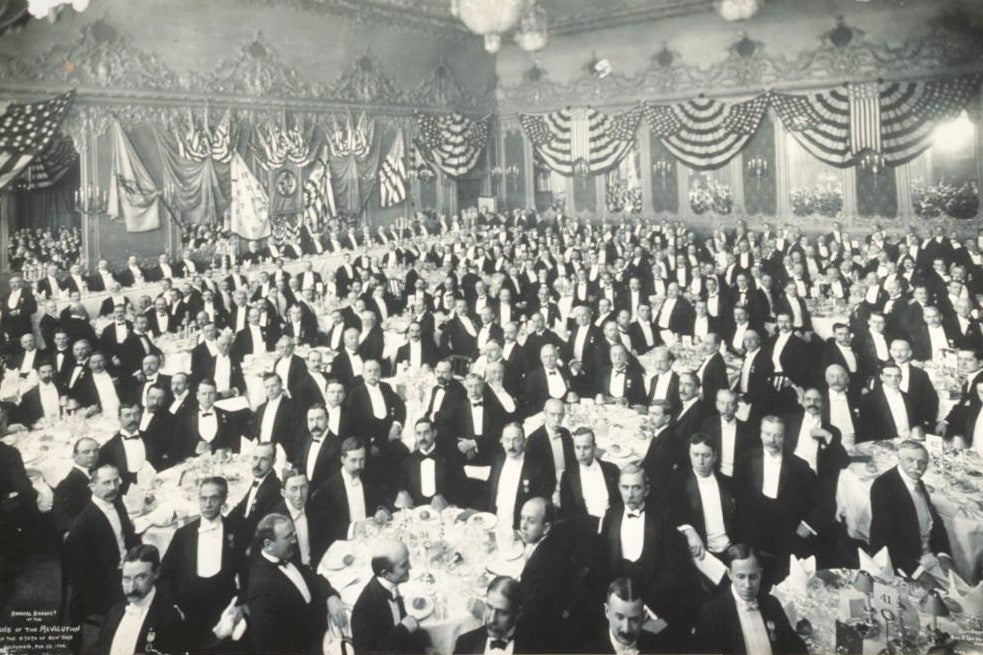In colonial America, restaurants as we know them today were virtually unheard of. The main gathering places in the 1700’s were taverns and coffee shops, places frequented mostly by rowdy young men. Because of this, though taverns and the like were known as fonts of news and information, they were also considered unseemly places for respectable people, particularly respectable women, to hang out.
With the rise in commercial spaces and capitalism that took place in the early nineteenth century, small “eating houses” began to spring up in the city. These establishments catered mostly to businessmen looking for a quick lunch, but entrepreneurs in the city soon saw an opportunity. Newly-created public spaces such as movie theaters, department stores, and hotels were becoming fashionable places for young women of the time to visit. It was a small jump to creating eating establishments that also catered to this demographic. According to Cindy Lobel, “Restaurants served as both a mirror and refractor of gender conventions, providing a semi-public space for middle-class and elite women to participate in the burgeoning commercial entertainments of the city.”
In 1837 Swiss immigrants John and Peter Delmonico, seeing an opportunity to cater to wealthy New Yorkers, opened the first fine dining restaurant in the country, styling it after similar restaurants in France. Delmonico’s, as it was called, set a standard for restaurant service in New York that would be copied well into modern times. They employed a French chef, had white linen table cloths, printed menus, and even private dining rooms for more discerning guests, an unheard-of luxury at the time. The restaurant went through several incarnations over the years, but was most recently reopened at its original location at 56 Beaver Street in the Financial District in 1998.
Weekly Digest
The trend of eating out soon caught on. While the original restaurants were fine-dining establishments that targeted wealthy upper class female patrons looking for a respectable place to gather and share a meal, new restaurants catering to every income and demographic soon followed. Even the local hotels and boarding houses got in on the action by opening free-standing restaurants that serviced not only their own guests, but other visitors to the city and passing locals alike. By the mid-1800’s the restaurant business in New York was booming and the city had taken its place as one of the best culinary destinations in the world.







